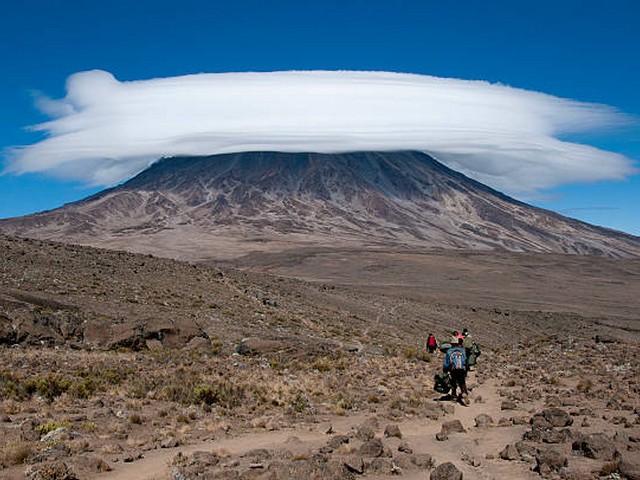Understanding Kilimanjaro’s Ecosystems and Wildlife: A Journey Through Nature’s Wonders
Nestled in the heart of Tanzania, Mount Kilimanjaro isn’t just a towering giant known for its snow-capped peak; it’s a vibrant ecosystem brimming with life and natural beauty. At Kilimanjaro Centre for Trekking and Ecotourism (KCTE), we believe that to truly experience the magnificence of Kilimanjaro, one must delve into understanding its ecosystems and the wildlife that call it home. This majestic mountain is not only a climber’s paradise but a sanctuary for a diverse range of flora and fauna that astonish and delight nature enthusiasts alike.
The Tapestry of Kilimanjaro’s Ecosystems
The Cultivated Zone: Where Humanity and Nature Meet
Kilimanjaro’s journey begins in the lower reaches where the Cultivated Zone thrives. Here, the rich volcanic soil supports lush plantations of coffee, banana, and maize. This zone is a perfect example of how humans and nature can coexist and benefit from each other. The farming practices maintained by local communities are a testament to the sustainable relationship that can be fostered with natural environments.
The Forest Belt: A Biodiversity Hotspot
Ascending further, the dense, misty forests of the Montane Forest Belt envelop you in a world of verdant greens and vibrant wildlife. This area is a crucial habitat for numerous species, including the elusive Kilimanjaro tree hyrax and the playful blue monkeys. Birdwatchers will be in paradise, spotting rare species like the Hartlaub’s Turaco and the African Green Broadbill. The forest also acts as a critical water catchment area, feeding the rivers and streams that flow down the mountain.
The Heather and Moorland: The Wild Open
As you climb higher, the landscape transforms into the heather and moorland zone. This area is characterized by lower temperatures and windswept vistas. Giant heathers tower over the landscape, creating a surreal environment that seems straight out of a fantasy novel. It’s here that one might spot the Kilimanjaro shrew or hear the calls of the White-necked Raven overhead.
The Alpine Desert: Harsh but Beautiful
Above the moorland lies the Alpine Desert zone. The air is thinner and the landscape more rugged. Despite its stark appearance, life persists here in hardy forms. Lichens cling to rocks and small, tough flowers like the Helichrysum newii dot the landscape, adding bursts of color to the grey and brown terrain. The resilience of these species, thriving in such extreme conditions, is a profound reminder of nature’s adaptability.
The Summit: The Ice-Capped Crown
Reaching the summit zone of Kilimanjaro is like stepping onto another planet. The glaciers and snow caps that crown the peak are simply breathtaking. This zone is less biodiverse due to its extreme altitude and cold, but it’s the plants and animals that do inhabit it, like the Kilimanjaro leopard and the high altitude moss, that inspire awe for their sheer perseverance.
Wildlife on Kilimanjaro – Survival at Different Altitudes
Mount Kilimanjaro is not just a feast for the eyes with its ecological diversity; it’s also a sanctuary for wildlife that has adapted uniquely to the varying climates along its slopes. From the elephants and leopards that roam the lower forests to the high-altitude adapted rodents near the summit, Kilimanjaro’s wildlife is as varied as its landscapes. Each species adds a vital thread to the tapestry of Kilimanjaro’s ecosystem, contributing to the mountain’s ecological balance and allure.
Why Kilimanjaro’s Ecosystems Matter
The ecosystems of Kilimanjaro do more than provide habitat for wildlife; they play a significant role in the ecological health of the region. They regulate climate, support agriculture, and sustain livelihoods. Preserving these ecosystems is crucial, not just for the biodiversity they support but for humanity as well. At KCTE, we are committed to sustainable tourism practices that help protect these environments for future generations.
Climb and Discover with Kilimanjaro Centre for Trekking and Ecotourism (KCTE)
Embarking on a trek up Kilimanjaro with KCTE is more than just a climb; it’s an educational journey through the heart of one of the world’s most spectacular ecosystems. Our guided tours are designed not only to challenge you but to enlighten, as we share insights into the ecological wonders and the conservation efforts that keep Kilimanjaro thriving.
Why Choose KCTE?
- Expert Guides: Our guides are knowledgeable not only about the best climbing practices but also about the mountain’s ecology and wildlife.
- Sustainable Practices: We believe in leaving no trace and ensure that our tours are conducted in a way that respects and preserves the natural beauty of Kilimanjaro.
- Cultural Immersion: Experience the local culture and contribute to the community through eco-friendly tourism.
FAQ – Understanding Kilimanjaro’s Ecosystems and Wildlife
What is the best time to see wildlife on Kilimanjaro?
The best time to witness wildlife is during the dry seasons, from late June to October and from late December to early March, when animals are more likely to be seen in the lower zones.
Are there any endangered species on Kilimanjaro?
Yes, several species, including the Kilimanjaro leopard and Abbott’s duiker, are considered vulnerable or endangered and are a key focus of conservation efforts.
How does climate change affect Kilimanjaro’s ecosystems?
Climate change poses a significant threat to Kilimanjaro’s ecosystems, particularly the glacial retreat at the summit. This affects not only the mountain’s water reserves but its biological diversity as well.
Can tourists participate in conservation efforts?
Absolutely! KCTE offers eco-tours where tourists can engage in conservation activities, including tree planting and wildlife monitoring.
Embrace the Call of Kilimanjaro
Understanding Kilimanjaro’s ecosystems and wildlife enriches your climbing experience, transforming it from a physical challenge to a profound journey of discovery. We at Kilimanjaro Centre for Trekking and Ecotourism invite you to join us on this journey. Climb with us, learn with us, and become a part of Kilimanjaro’s ongoing story.
Ready to explore the natural wonders of Kilimanjaro? Contact us today to book your climb and begin an adventure that goes beyond the mountain itself.




